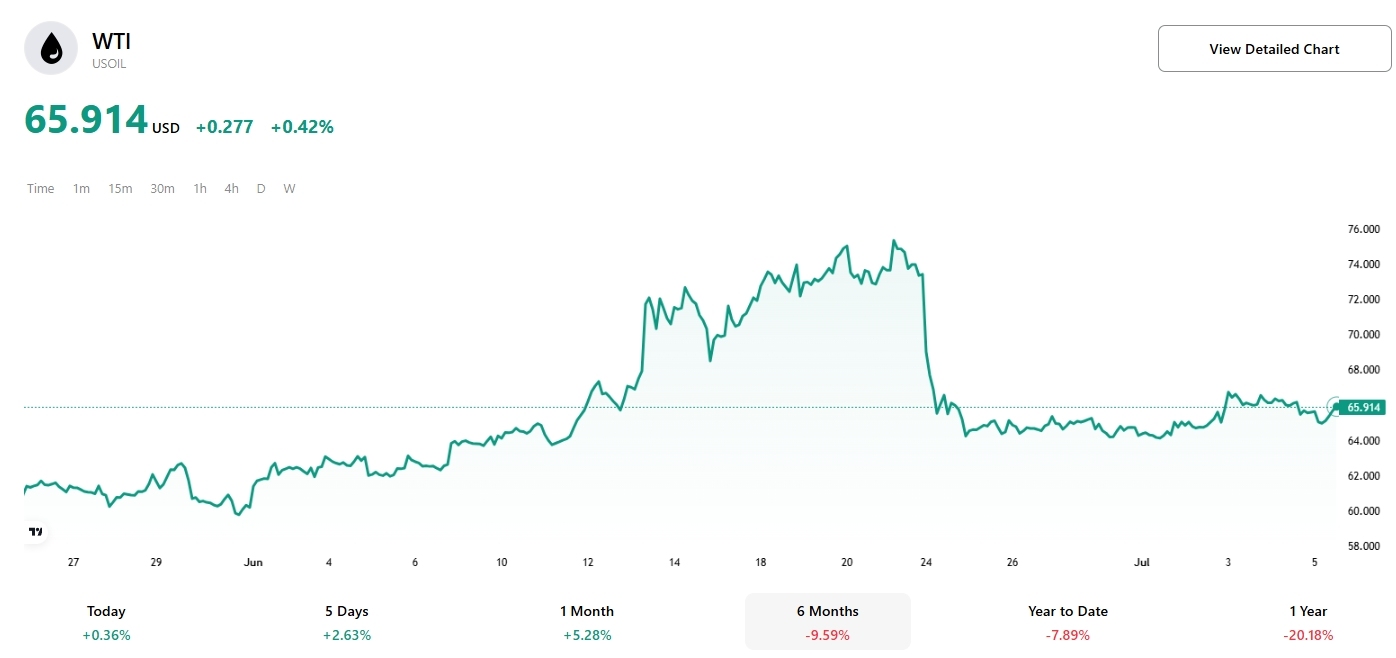OPEC Accelerates Output Unexpectedly, Oil Price Support to Rely on Only “Two Factors” in Second Half of 2025
TradingKey - OPEC+ surprised the market by announcing its fourth consecutive round of crude oil production increases at its early July meeting — the scale of the increase far exceeded expectations and triggered a new supply shock, deepening concerns over oversupply in 2025 and weighing on oil prices. Analysts now believe that only two factors — a weaker U.S. dollar and a potential shift in OPEC’s stance — may provide support for oil prices in the second half of the year.
On July 5, eight OPEC+ oil-producing member countries led by Saudi Arabia announced an additional output increase of 548,000 barrels per day (bpd) for August, surpassing the previously agreed 411,000 bpd ramp-up in May, June, and July. The move was well above the market’s expectation of another 411,000 bpd increase.
At the same time, Saudi Arabia unexpectedly raised the price of its flagship Arab Light crude for Asian customers by $2.20 per barrel — significantly higher than the expected increase of just 65 cents.
Analysts interpreted OPEC+'s aggressive production increase as a sign of confidence among members that buyers can absorb more crude supply. Meanwhile, Saudi Arabia’s decision to raise prices reflects optimism about rising summer fuel demand and a desire to keep oil prices firm.
UBS analysts noted that the oil market remains tight enough to absorb additional output for now. However, risks such as intensifying trade tensions are rising, and market conditions could appear less tight over the next six to twelve months, posing downside risks to oil prices.
With the July 9 deadline approaching for the expiration of reciprocal tariff suspensions, investor confidence in the U.S. reaching a final trade deal with other major trading partners remains low. News flow around tariffs has also been mixed.
U.S. President Donald Trump previously stated that unilateral tariffs could range from 10% to 70%, set to take effect on August 1. U.S. Treasury Secretary Scott Bessent hinted that the suspension period might be extended until August 1.
What Can Oil Prices Still Rely On?
Priyanka Sachdeva, an analyst at Phillip Nova, said concerns over Trump tariffs would continue to weigh on market sentiment in the second half of 2025. A weaker U.S. dollar is currently the only factor supporting oil prices.
In addition, OPEC's push to increase production to defend or regain market share may place growing fiscal pressure on OPEC+ nations. The IMF has pointed out that Saudi Arabia needs to maintain oil prices above $90 per barrel to support government spending, as the country is advancing an ambitious economic growth plan.

WTI Oil Price, Source: TradingKey
Under this financial strain, the Saudi government may eventually return to production cuts, Bloomberg reported.
Neil Atkinson, former IEA official, noted that they do have the option to suddenly reverse course. "There’s no alternative but to ensure market share and accept lower prices," he added.
Find out more
免责声明:投资有风险,本文并非投资建议,以上内容不应被视为任何金融产品的购买或出售要约、建议或邀请,作者或其他用户的任何相关讨论、评论或帖子也不应被视为此类内容。本文仅供一般参考,不考虑您的个人投资目标、财务状况或需求。TTM对信息的准确性和完整性不承担任何责任或保证,投资者应自行研究并在投资前寻求专业建议。
热议股票
- 1
- 2
- 3
- 4
- 5
- 6
- 7
- 8
- 9
- 10